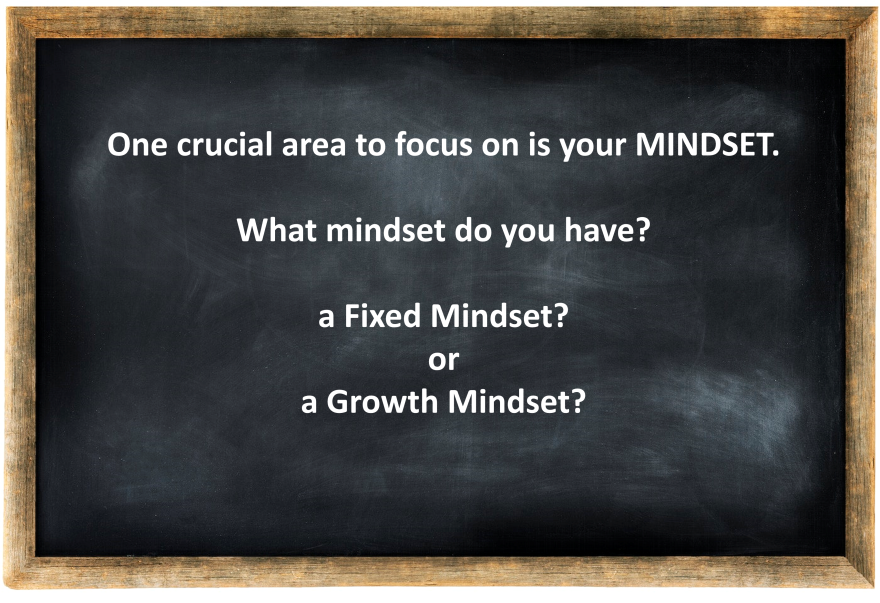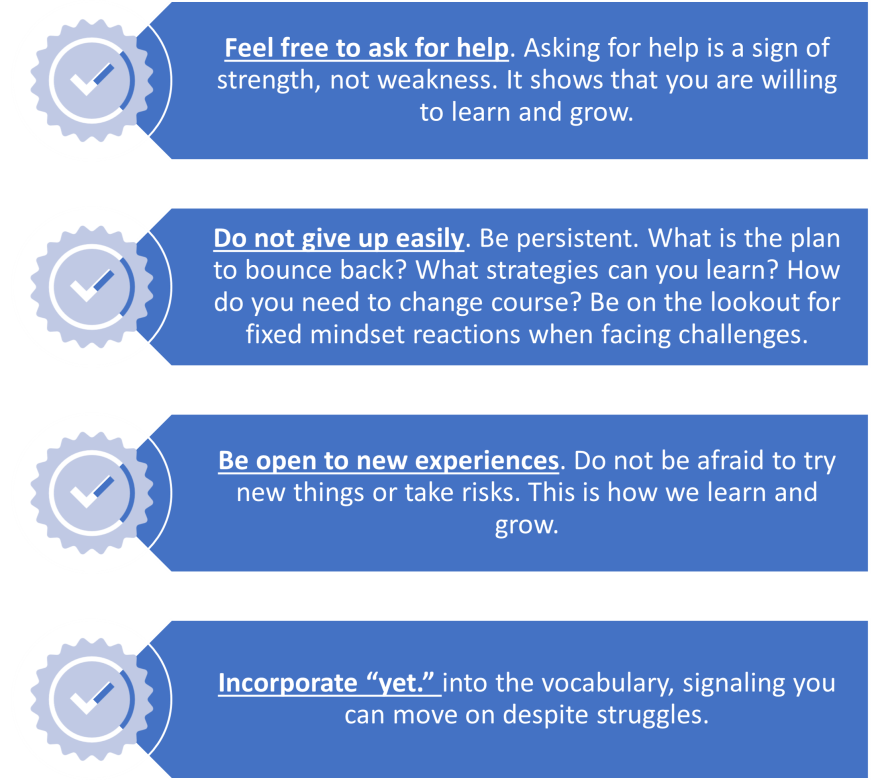|
Are you a student? Then please read on. Are you working? Do not let the title stop you from reading. This topic is for you, too!
The start of a new academic year is seen as a time for new beginnings. It is a time to set goals, learn new things, and grow academically and personally. It is also a time to reflect on what worked last year and identify areas where you can improve. One crucial area to focus on is your mindset. How we perceive our abilities is crucial to our motivation and achievement. This information can help us all.

What is a growth mindset?
A growth mindset encompasses the belief that abilities can be developed through work and effort. However, a growth mindset is more than just focused on effort. It includes trying new strategies and seeking input from others when encountering difficulties. For example, a person afraid of public speaking signs up to attend a webinar and practices the skills learned. A fixed mindset is the belief that your abilities are "what they are" and cannot be changed—for example, an athlete who did not do well in a race decides to switch sports. According to Carol Dweck, a psychologist who is known for her research on mindset, (1) we are all a mixture of fixed and growth mindsets, (2) we will probably always be, and (3) if we want to move closer to a growth mindset in our thoughts and practices, we need to stay in touch with our fixed mindset too. (Dweck Revisits the Growth Mindset, 2015/09) Staying in touch with a fixed mindset in the context of developing a growth mindset means being aware of your thoughts and beliefs about your abilities and how they can affect your behavior. It also means being willing to challenge those thoughts and beliefs, even if they are comfortable or familiar.
Why is a growth mindset necessary?
Studies have shown that people with a growth mindset are more likely to succeed in school and their careers. A study of 1,200 students found that those with a growth mindset were more likely to get better grades and score higher on standardized tests than those with a fixed mindset (Yeager & Dweck, 2012). A study of 700 employees found that those with a growth mindset were more likely to be promoted and earn higher salaries than those with a fixed mindset (Burnette et al., 2018).
Research shows that people with a growth mindset are more likely to take risks, learn from their mistakes, and persevere in the face of challenges.
Here are some additional benefits:
- Improved resilience and the ability to bounce back from setbacks and challenges.
- Increased motivation to keep working hard, even when things get complicated.
- Greater creativity and openness to new ideas and risk-taking.
- Enhanced problem-solving skills and finding creative solutions.
- Stronger relationships
Tips to develop a growth mindset:
1. Be aware of your mindset. The first step is to become aware of your own mindset. Observe your fixed mindset triggers. Pay attention to your self-talk. What do you say to yourself when you make a mistake? "I'm just not good at this" or "I'm never going to get this"? Be aware of your emotions. Do you feel anxious, frustrated, or angry when you encounter a challenge? Notice how you react to feedback. Do you get defensive when you are criticized? Do you avoid taking risks because you are afraid of failing?
2. Challenge your negative thoughts. When you have a negative thought about yourself or your abilities, challenge it. Ask yourself if there is any evidence to support the thought. Then, practice flipping those thoughts around and choosing a more positive perspective.
3. Focus on your strengths. Everyone has strengths. Make a list of your strengths and focus on them. Then, move into action by choosing concrete goals and action steps to highlight the strengths. In a study (Schutte & Malouff, 2019), subjects identified one of their highest strengths from their VIA Survey results (the VIA Survey is a free, 240-item online survey that measures 24 character strengths. See box for link.) and used that signature strength in a new way each day for one week. The exercise boosted happiness and decreased depression.

4. Be open to feedback. Feedback can help identify areas for improvement. Be open to receiving feedback and using it to learn and grow.
5. Set challenging goals. Set goals that are challenging but achievable. This will help you stretch your perceived limits and grow.
6. Celebrate your successes. When you achieve a goal, take some time to celebrate your success (remember that the path and strategy can be as critical as the outcome). This will help you stay motivated and keep moving forward.
Strengthen your mindset everyday:

Awareness of the two mindsets will allow you to think and react in new ways. Remember, the journey towards a growth mindset is developed over time. As humans, we are a constant mix of mindsets striving to stay on the growth mindset path.

With gratitude,
Ana Isabel Sánchez
   
|